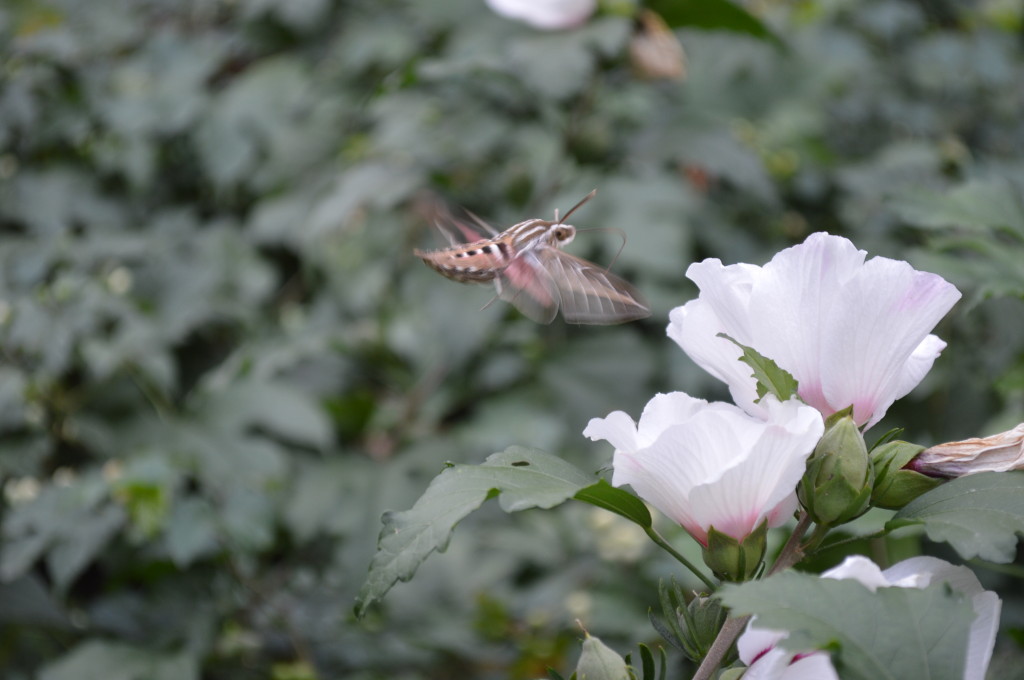
Iowans who get “buzzed” while outdoors at this time of year might have had a close encounter with a whitelined sphinx moth, commonly known as a hummingbird moth.
The moths, also known as hawk moths, are often mistaken for hummingbirds, with the rapid pulse of the moth’s wings resembling that of its namesake.
Whitelined sphinx is one of the many varieties of hummingbird moths commonly seen in Iowa. Gardeners who notice a large dark hornworm defoliating their tomatoes or other plants may be tempted to do away with the caterpillar, but the moths are important pollinators, so consider it worth the sacrifice of a plant or two.
About 125 different species of sphinx moths exist in the U.S. and Canada.
The moths are harmless, so there is no need to use chemicals or otherwise try to eliminate them. Iowa State University’s Department of Entomology offers more information about hummingbird moths.
NOTE: Save CR Heritage will have pollinator-friendly native turtlehead, columbine, phlox and more for sale at A Vintage Fall Harvest Sale, next Saturday, Sept. 17, from 8:30 a.m. to noon at the J.E. Halvorson House, 606 Fifth Ave. SE, Cedar Rapids, Iowa. Plus, Japanese Kerria, daylilies, allium, daisies, coral bells, lilies, snapdragons and other plants; most for just $5.


No Comments Yet